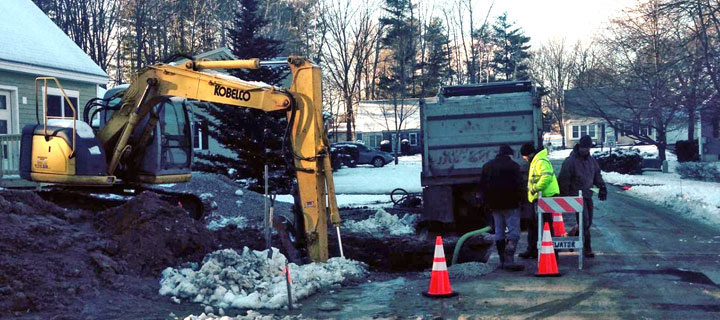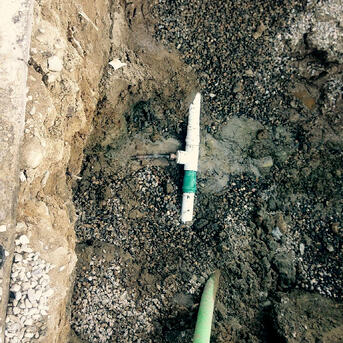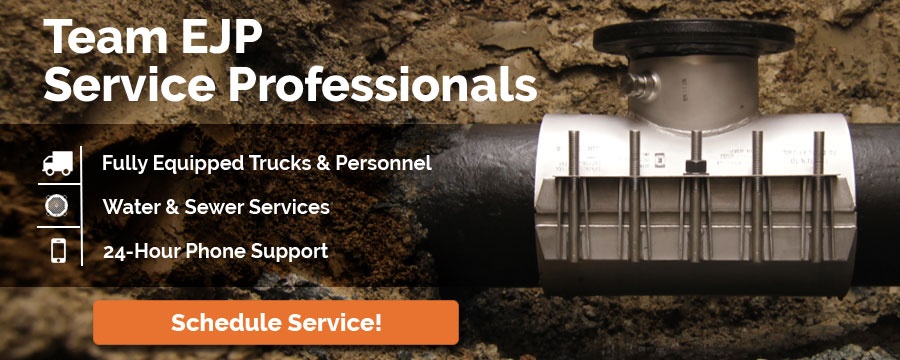How Freezing Temps Affect A Water Service & Mains
- Home
- Team EJP Blog
- How Freezing Temps Affect A Water Service & Mains
- Jan 12, 2015 3:06:00 PM
- Everett J. Prescott

As temperatures begin to drop and winter weather rears its ugly head for another year, one area of the waterworks industry becomes increasingly important with each passing day: water mains. It goes without saying that freezing temperatures increase the chances of a water service or main break with each degree. However, only by having an understanding of exactly what happens during freezing temperatures will you be able to take the appropriate steps to keep these water mains safe all throughout the season. A frozen water main is a potentially devastating problem that can affect thousands of people in one fell swoop.
Water Mains
Depending on the service area of the water provider in question, a single company or municipality may be responsible for over 1,000 square miles. The water services that operate within that area, which usually amount to more than 5,000 miles of pipe, can provide necessary and important water to hundreds of thousands of people. A water service can vary in size depending on exactly what they're being used for, but usually fall somewhere between one inch and eight feet in diameter.
Depending on the age of the water service and main, it could be made out of a variety of different types of materials including cast iron, ductile iron and more. Cast iron was commonly used to make water pipe in decades long past and is very brittle, especially as far as low temperatures are concerned. Ductile iron is much stronger, though not all of the water mains that you may be dealing with will have been created using this stronger material.
How Freezing Temperatures Affect Water Mains

The most obvious effect that freezing temperatures have on water mains is that they break, similar to the way a frozen water pipe might burst in a home. As the water inside the main begins to freeze, it takes up a dramatically larger amount of space than originally intended as that liquid begins to freeze and turn to ice. As the ice expands, so does the pipe. At that point, something has to give - either the pipe will be able to last long enough for temperatures to warm up to the point where the water begins to flow again, or the pipe will break and will need to be replaced.
Even if the pipe doesn't break, however, frozen water within a main can severely degrade or even stop necessary water service to everyone in a particular area. As a result, it's important to always monitor water mains and make sure that everything is going as smoothly as possible at all times.
Even professionals in the industry suffer a wide range of misconceptions about how freezing temperatures affect water mains. Many people don't realize that even a ten-degree change in the air temperature, the water temperature, or both can dramatically increase the overall amount of stress on a pipe. When the temperature of the water flowing through the main drops below 40 degrees Fahrenheit, the pipe itself will begin to become more brittle. Note that water doesn't actually begin to freeze until temperatures drop below 32 degrees. This means that you may begin to experience problems with your mains before the freezing process actually begins.
It's also important to note that water temperature always falls behind air temperature due to chemical factors in each material. Just because the air temperature outside is 40 degrees, for example, doesn't mean the water temperature will be the same. The reverse is also true - just because the air temperature has warmed back up doesn't mean that the water temperature will. As a result, some water main breaks can occur even one or two days after the temperatures drop below the freezing level.
Other Factors That Contribute to Water Main Breaks
Another issue with freezing temperatures and water mains has to do with the wide range of different issues that the weather can severely exacerbate during the winter. Freezing temperatures can cause a water main break for a number of reasons, even if the fact that the water froze wasn't one of them.
Ground frost is a big factor in the northern states. Moisture in the ground expands when it freezes and when that water starts to thaw; the ground sinks to fill the space. This can be seen on roadways in the form of frost heaves in the winter and potholes in the spring. The moving ground has enough force to damage roadways, bridges, and even buildings. Since this process takes place under ground it also has a direct affect on water services, and water mains.
Lower temperatures can cause cast iron water mains to become more brittle than normal, which can lead to a break. Soil erosion from a previous pipeline break that was not properly handled could also lead to a break by eroding the existing soil around the main itself.
Corrosion is also a very serious issue that is exacerbated by the winter weather, especially if you're talking about naturally brittle materials like cast iron water mains. If the pipes that make up a water main are not lined with cement, they could start to corrode from the inside and will eventually break. Additionally, smaller pipes will always be at a much greater risk of water main breaks than pipes with a larger diameter.









